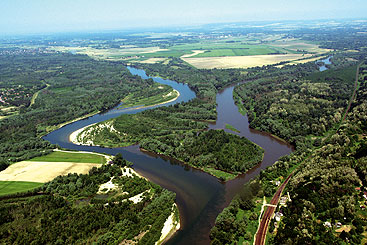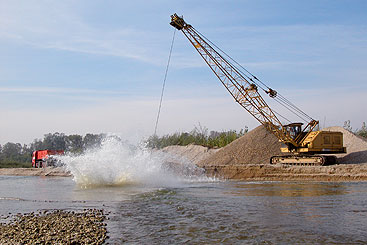The Drava River – a flowing controversy

The Drava River – a flowing controversy
The heath of the Drava River, which hosts some of the last free-flowing river sections in Europe, is deteriorating and many native species are in severe decline. But the river’s biggest threat may be a lack of change in the water sector.

The Mura-Drava confluence is considered one of Europe’s most precious floodplain and wetland areas. While riverbed maintenance activities for this area are recognised as devastating for the environment, they are being approved by local governments.
The drava River is one of the five largest tributaries of the Danube River, and flows through five different countries to its mouth downstream of Osijek. The Drava’s main tributary is the Mura River, and the two meet in Croatia to form a unique natural river mouth. The upper parts of both rivers are heavily regulated and their ecological status has deteriorated. But the lower parts of both rivers along the border of Croatia and Hungary are semi-natural to fully-natural lowland rivers with natural dynamics, thanks ironically to the former political situation of the Iron Curtain. Their free-flowing sections are some of the last remaining river ecosystems of the Europe, hosting numerous endangered habitats and species. With deteriorating river health and many species in severe decline, those two rivers deserves special attention and protection measures. And that’s where the controversy begins.
The area is protected by national legislation as a part of a National Ecological Network and a proposed regional park (International Union for Conservation of Nature Category V), and international protection is proposed through a possible UNESCO Man and Biosphere Transboundary Reserve. If properly implemented, both protections should ensure the future of this ecosystem. Public participation for the proposed regional park is currently under way in all five counties along the Mura and Drava rivers, to collect opinions and comments from interested stakeholders. In addition, the Croatian and Hungarian governments recently signed an agreement on the protection and conservation of this valuable ecosystem – an important shift and huge step towards the integrated management of both rivers.
Threats to the region are becoming stronger. Despite this planned protection, both rivers are under huge pressure from an old-fashioned water management sector. Though the commercial excavation of sediments is now forbidden, the river bed is still under threat of regular river maintenance projects for flood protection, navigation, and similar activities. In addition, two new dams with reservoirs at Novo Virje and Osijek are still under consideration, and while the Novo Virje hydropower plant is off energy production plans, it is still a threat for the future in the form of two smaller dams Move 1 and 2. Riverbed maintenance activities could be very destructive if planned for areas of great ecological values, like the Mura-Drava confluence. Although these plans have been recognised as devastating for nature and environment, they have still received all the necessary licences and positive environmental impact assessments, and are being approved by local governments.
The most devastating activity was executed some 30 km from the mouth of the Danube, at Petrijevci, where Croatian water management and construction firms excavated more than 3,000,000 m³ of sand. This was conducted without any licence, legal document, environmental impact assessments or nature impact assessments. Instead, the sand was used in the construction of the Vc Highway. As the project was declared a matter of national interest all laws and regulations were ignored, showing shameful behaviour by the Croatian Government toward its natural treasures. This illegal extraction stopped abruptly in September 2009 after an EU report on the Drava regulation project was issued.

At Petrijevci, 30 km from the mouth of the Danube, Croatian water management and construction firms excavated more than 3,000,000 m³ of sand – without licences, legal documents, environmental impact assessments or nature impact assessments.
All these works, together with a total of 22 hydropower plants on the Drava, cause a huge sediment deficit in the river resulting in severe problems for wildlife, agriculture, forestry, groundwater levels and river stability. The last decade witnessed extensive gravel and sand extraction projects that further increased the problem of the sediment deficit in the Drava River.
Sluggish water management policies. The Drava River is a perfect example of the lack of change in the water sector and of very conservative water policies and practices, and the recently published Croatia 2009 EU Progress Report clearly shows that there has been little progress in the water sector. While the new Water Act, which came into force in January, includes significant changes to the approach of water management and has substantially incorporated the EU Water Framework Directive requirements, there is still much concern for how these new legal obligations will be interpreted by local water management units and how they will be implemented in the field.
Meanwhile, old-fashioned water management policies are at the heart of a plan to regulate the whole of the final 56 km-long stretch of the Drava River with some 112 different structures and for the construction of a 25 km long reservoir as a part of the multifunctional Osijek system (energy, flood protection, irrigation, navigation, tourism, recreation). Despite strong opposition from the NGO sector during the public hearing process, as well as conclusions of the independent EU experts on the project, the environmental impact assessment has been approved by the Government. The official position is that the project will go ahead, despite the fact that this regulation project is not in line with EU environmental standards and legislation. Change, it seems, flows slowly.





